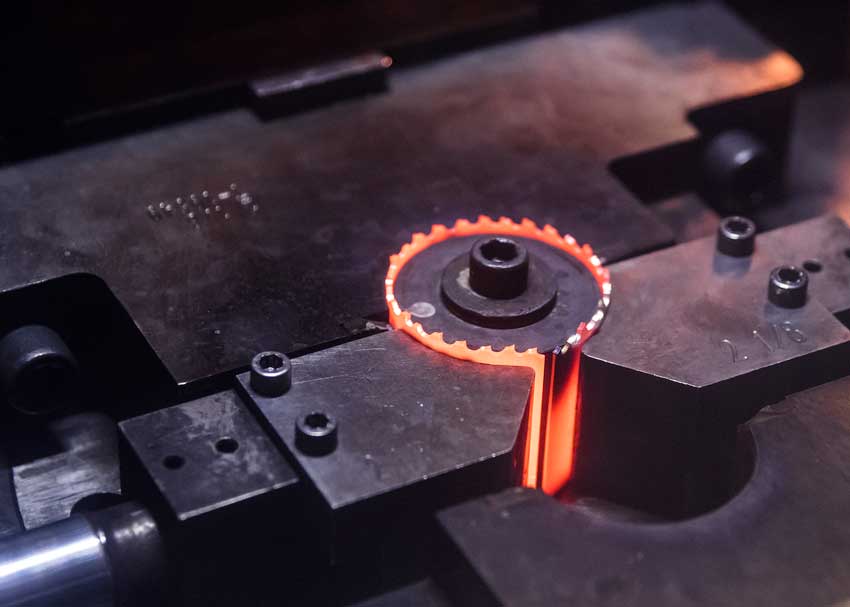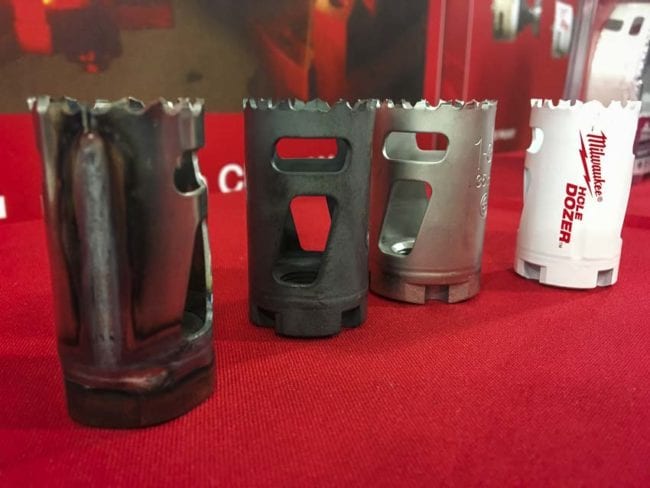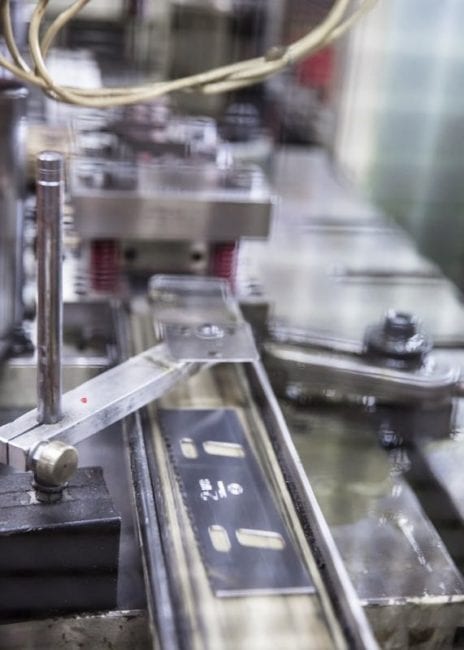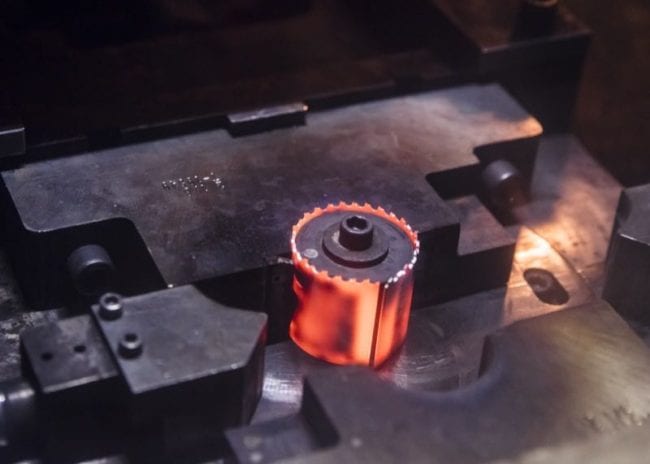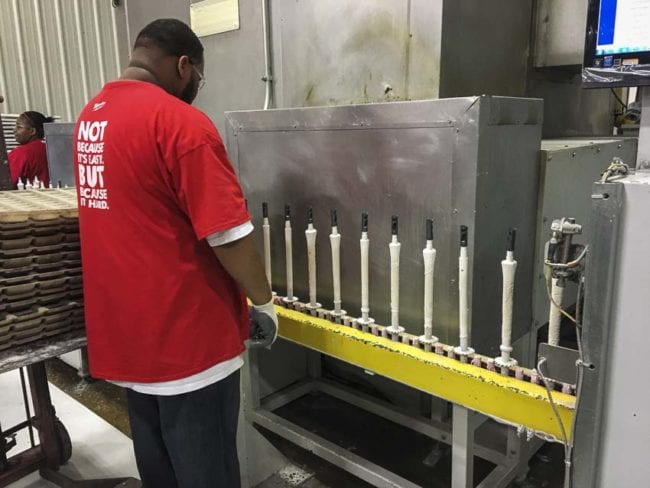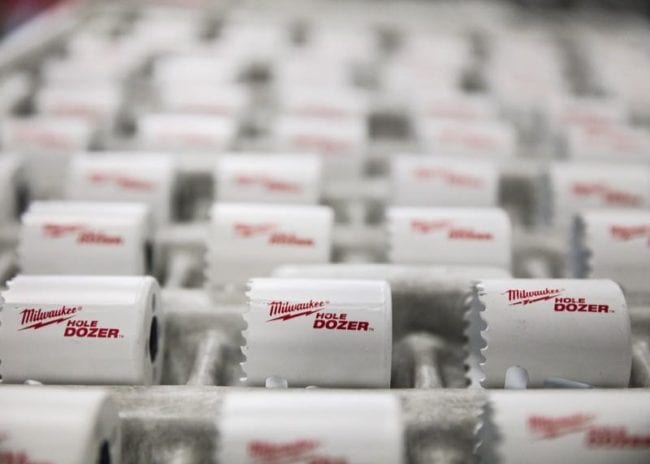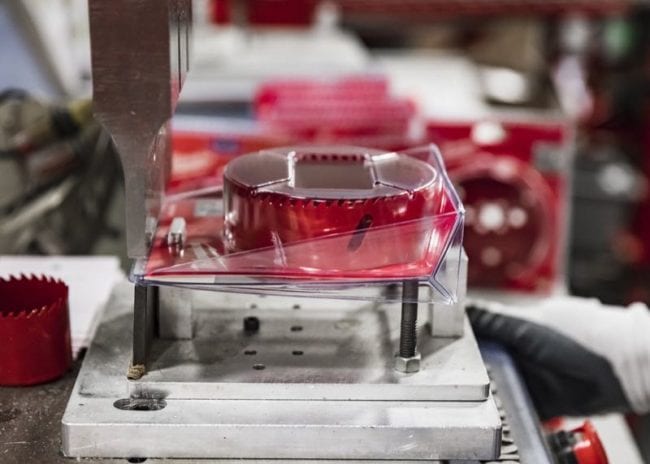Fresh off our checking out Milwaukee SawZall blade manufacturing, Ryan Rudzinski started off our Milwaukee Hole Saw factory tour with a look at the Hole Dozer bimetal hole saws. In 1992, Milwaukee hole saws were made in their Brookfield, WI facility. During 2004, they moved manufacturing to their Greenwood facility. In 2015 the Hole Dozer was announced. It broke norms by including a lifetime warranty for broken teeth. This product came about when Milwaukee realized that nearly all industries were using these types of hole saws. Electricians, plumbers, HVAC, and MRO professionals all need good quality hole saws that don’t break easily. Many Pros also move back and forth between metal and wood boring applications. This goes double for those involved in home remodeling, where you can run into just about anything.
Milwaukee designed the Hole Dozer for durability in both metal and wood applications. The company tested over 3200 different designs, many of which they sent out into the field for practical application testing. Tradesmen and workers cut over 100,000 holes with these saws during just the testing phase.
Through the process, they found that durability, speed, and even plug removal were at the top of the priority list for Pros. So what makes the Hole Dozer so special? We found out when we went on our Milwaukee hole saw factory tour to see the hole saw manufacturing process up close.
Milwaukee Hole Saw Factory Tour
Hot forming eliminates the process of heat treating—cutting out an entire step in the process. Milwaukee has spent a lot of time on their weld strength and how the steel design and thickness impacts what they can do.
Hole Saw Manufacturing Process
After a straightening process, a machine stamps the hole saw steel into blanks with the appropriate width and length. This also adds the core removal ports.
The flat pieces of steel proceed to the hot form molder and furnace.
A combination of dies form together to take those blanks and form them into the hole saw shape. This is where the hot forming process really shines. It takes about 20 minutes to switch out the entire line from one size hole saw to another.
After forming, an automated system welds the base onto the round hole saws. Next, they get sent on to the painting process.
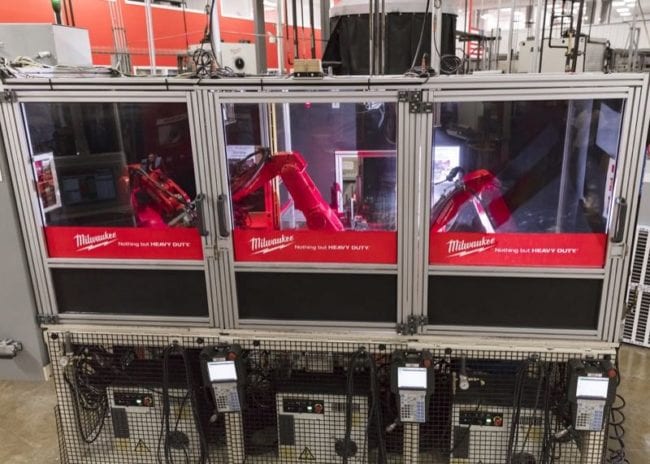
At the paint line, the operator puts the hole saw on the stem. It goes through an automated paint process and then a heat process to dry the paint. From there it moves on to a cooler to allow them to be handled.
Workers apply the logo, and the hole saw passes a quality inspection.
The final process in Hole Dozer manufacturing is packaging. Various kits such as boxed multi-packs, single arbor packs, and clamshells allow many options for consumers and retailers.
Conclusion
Of course, a fun component of the Hole Dozer manufacturing tour included a visit by Phil Bryant, the governor of Mississippi. He stopped by to talk a little bit about the special relationship Milwaukee Tool has with the people of Greenwood and the state of Mississippi. This southern state is bending over backwards to help Milwaukee expand, and—in turn—Milwaukee is increasing its commitments to keeping these valuable manufacturing jobs in the area.
I’ve used hole saws for decades—it was great to see what actually goes into making these tools. I no longer take them for granted, and it helped us to get a better understanding of what goes into making these power tool accessories.

